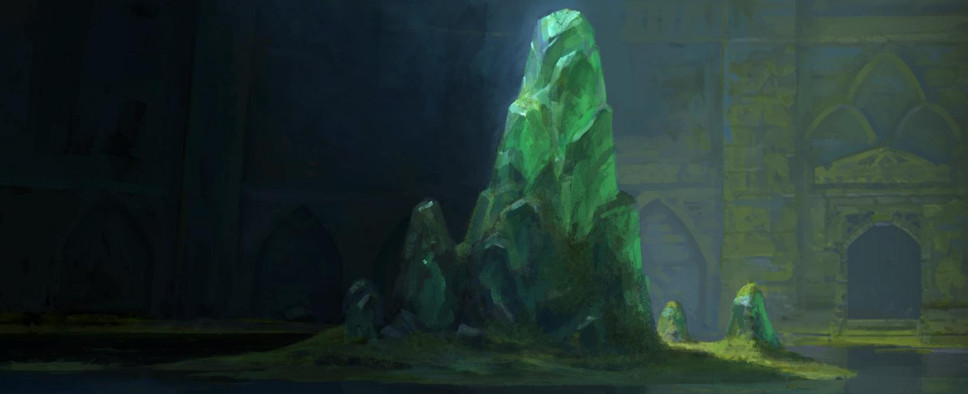Pillars of Eternity Review
-
Category: ReviewsHits: 29427

Article Index
Gameplay Mechanics
Obsidian used the Unity Engine to create Pillars of Eternity. The Unity Engine has powered all sorts of games during its history (including recently Wasteland 2 and Might & Magic X: Legacy), but for some reason Obsidian massaged it to look like the Infinity Engine, and so the difference between playing Pillars of Eternity and one of the recent Enhanced Edition games is minimal.
In other words, you play Pillars of Eternity in roughly the same way as the Infinity Engine games. The world is presented using an isometric view, and you left-click to move your party (or right-click to move in formation), you left-click to interact with people or containers, and you left-click to attack enemies. There are also some useful hotkeys, like the spacebar for pausing the game (including during combat so you can issue commands), the tab key for highlighting interactive objects, and the alt key for switching to scouting / sneaking mode. Since there aren't a lot of keys to remember and most everything can be done with the left mouse button, controlling the game is easy.
Combat starts up whenever an enemy spots you -- or when you force-attack someone, if you're feeling murderous. Combat usually involves a dozen or more creatures (including your party), and it proceeds in real time, so it can be hectic. Luckily, you can pause the game at any time to check what's going on and issue orders, and you can also slow down the game's speed if you really want to micromanage your party's actions.
Characters have endurance as well as health, where their maximum endurance is usually about a third or a fourth of their maximum health. Each time a character takes a hit, they lose endurance and health. If they lose all of their endurance, then they're knocked out. If they lose all of their health, then they're either maimed or they die, depending on your difficulty settings. The important thing about endurance and health is that endurance can be healed by spells during battle, and it returns automatically after a battle, but health only returns when resting. That means you can start multiple fights in a row and be at "full health" for each one, thus reducing the need to rest. But on the downside, the system is a little weird, and you might be better off in a fight not trying to heal a squishy character at all, because it might reduce their health too much, forcing your party to rest afterward (which is bad because the game limits how much you can rest before returning to town).
The combat system is relatively simple. There isn't anything resembling aggro. Enemies just attack whoever they want, but they're also dumb, so if you present them with an obvious target -- like, say, your tank -- then they often oblige you. The only way you can control enemies is through engagement. Melee fighters can engage one or two enemies at once (just by being next to them), and if one of the enemies tries to move away, then your fighter gets a free, powerful attack against them -- which means they usually don't try to move away. So if you have three melee characters and three ranged characters, then you should be able to keep your back row safe, but if you're like me and you try playing with two melee characters and a ranger's animal companion, then you're frequently going to have enemies where you don't want them.
The most important stat for combat is accuracy, even for spellcasters (since spells can hit or miss just like regular attacks). Not only does accuracy control whether characters hit or not, it also controls the kind of hit they make -- from a minimal graze to a damaging crit. Accuracy is compared to a character's defenses, including deflection (for targeted attacks), reflex (for AOE attacks), will (for mental attacks), and fortitude (for physical attacks, like poison), and the more it wins by, the better the hit is.
Overall, the combat system works well enough. It does what it needs to do, and there are enough enemies, spells, and combat abilities that it never gets dull. Combat is also frequently optional (you mainly only earn xp for completing quests, not for killing enemies), so you can skip it when possible with no harm done. There's even an achievement for completing the game with fewer than 175 kills, but I'm guessing that sort of extreme might be difficult to accomplish (I received the opposite achievement, for over 1200 kills, about halfway through the campaign).
Since you don't earn experience points for battles, your reward for defeating most enemies is the loot they drop. Pillars of Eternity uses the same sort of equipment rewards as the Infinity Engine games, where there aren't any random or set items, and where about a third of the fixed items you find come from battles and quest rewards, and the other two-thirds come from shopkeepers, thus giving you a place to spend your money.
Most enemies also drop ingredients, which allows you to do some crafting. You can create food items (which can only be used outside of battle), potions (which can be used in battle), and spell scrolls. You can also enchant weapons and armor to increase the quality of the item and add a couple of bonuses. The enchanting mechanic is convenient because it means you're not held hostage by the items you happen to find in the campaign. You can modify basic items so they're useful to you as well.

